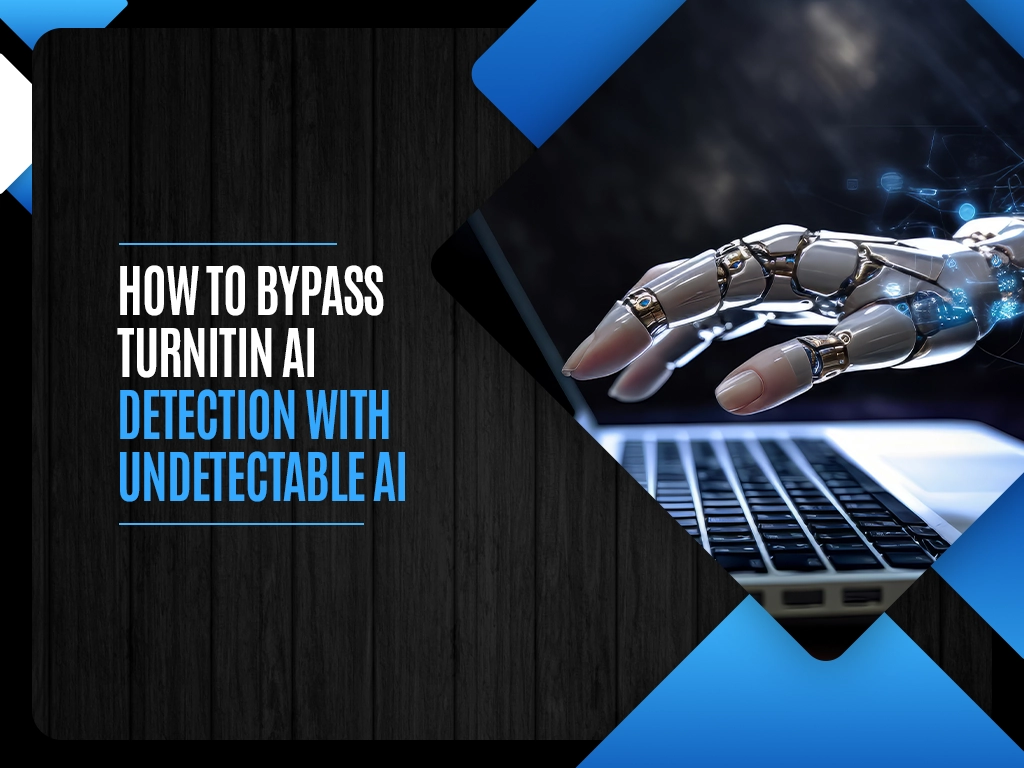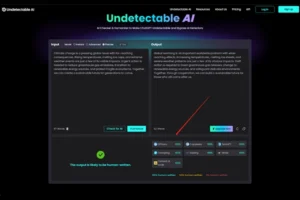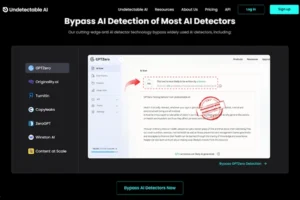How to Bypass Turnitin AI Detection with Undetectable AI
Learn strategies to bypass Turnitin AI detection using undetectable AI tools, ensuring your work remains plagiarism-free and original.

In the modern landscape of academic writing and content creation, the emergence of artificial intelligence (AI) technologies has introduced both revolutionary tools for assistance and complex challenges to overcome, particularly in maintaining the authenticity and originality of created content. Among these challenges is the detection and handling of AI-generated content by platforms like Turnitin, which is widely recognized for its capabilities in identifying similarities and originality in texts submitted by students and professionals alike.
The need to effectively bypass Turnitin AI detection capabilities without compromising on the integrity and quality of work presents a unique challenge for writers and academics.

Understanding the Need to Bypass AI Detection
The integration of AI in academic and content creation processes has undeniably enhanced efficiency and productivity. However, it has also led to increased scrutiny by platforms designed to safeguard the principles of originality and academic honesty. Turnitin’s adaptation to detect AI-generated content puts forth a scenario where even legitimate use of AI tools for research, drafting, or ideation could inadvertently result in flags or penalties, assuming malicious intent or plagiarism.
This critical perspective necessitates a nuanced approach to leveraging AI’s benefits while ensuring that content remains undetectable by AI detection mechanisms. Such an approach fosters creativity, innovation, and legitimate educational assistance without the drawbacks of potential false positives or undeserved penalties.
Exploring Ethical Boundaries
Before diving into the methodologies of bypassing AI detection, it is crucial to underscore the importance of ethical considerations. The intent behind seeking strategies to make content undetectable by AI detection tools like Turnitin should be aligned with ethical writing practices, ensuring that the integrity of educational tasks and content creation remains uncompromised. Using AI as a tool for enhancing writing quality, conducting research, or overcoming language barriers should not cross into the territory of academic dishonesty or intellectual theft.
Strategies to Bypass Turnitin AI Detection
While the notion of bypassing AI detection may pose ethical dilemmas, it is worth exploring the techniques that can be deployed to retain the creative essence and integrity of AI-assisted writing. These methods focus on humanizing the text and refining its elements to mirror genuine human thought processes, thereby reducing the likelihood of detection by AI-based platforms.

Leveraging Undetectable AI Writing Solutions
One of the first strategies is utilizing advanced, human-like AI writing solutions. Tools like Undetectable AI are designed to rephrase and structure AI-generated content in a way that resonates with natural human writing patterns. This tool stands out by employing sophisticated algorithms that adjust sentence structures, synonyms, idioms, and the overall flow of the text to closely mimic human writing nuances, effectively making the content undetectable by AI detection technologies.
Enhancing Originality through Personalization
Adding Unique Personal Insights
Injecting personal anecdotes, insights, and unique perspectives into AI-generated drafts is an effective way of enriching the content with originality that is inherently resistant to AI detection. This technique involves integrating one’s own knowledge, experiences, and reflections, thereby ensuring that the core essence of the text is uniquely tailored and personalized.
Incorporating Research and Citations
Deepening the content with well-researched information, data, and citations not only adds value but also embeds a layer of authenticity that distinguishes it from generic AI-produced text. Through diligent research and the inclusion of diverse sources, the text becomes a rich tapestry of information that reflects genuine effort and scholarly integrity.
Refinement through Editing and Rewriting
Manually editing and rewriting certain sections of the AI-generated content can significantly alter its detection footprint. This process may include:
- Adjusting Syntax and Vocabulary: Fine-tuning the choice of words and sentence structures to more closely reflect one’s personal writing style.
- Varying Sentence Lengths: Creating a dynamic flow by mixing shorter sentences with longer, more complex constructions to mimic the natural variability found in human writing.
- Eliminating Repetitive Patterns: AI tends to follow certain patterns in generating text. Identifying and breaking up these patterns can make the content seem more human.
- Enhancing the Narrative Voice: Infusing the text with a distinct narrative voice or point of view adds a layer of human touch that is difficult for AI detectors to question.
Employing Advanced Writing Prompts
When generating initial drafts using AI, the formulation of advanced, specific writing prompts can guide the AI towards producing more nuanced, human-like content. Crafting prompts that encourage creativity, depth, and a wide range of linguistic expressions can yield text that inherently differs from the typical outputs of AI writing models.
Conclusion
The journey to effectively bypass Turnitin AI detection traverses through a landscape of ethical considerations, innovative techniques, and a thoughtful approach to AI-assistance in content creation. By focusing on humanizing the AI-generated text through tools like Undetadata.
The aim is not to undermine the principles of academic integrity but to embrace the evolving role of AI in education and content creation, ensuring that its use respects the boundaries of ethical conduct while pushing the boundaries of creativity and intellectual growth. As technologies and detection methodologies continue to evolve, so too will the strategies for maintaining the authentic, human essence of AI-assisted content, ensuring it serves as a valuable tool in the amplification of human potential



